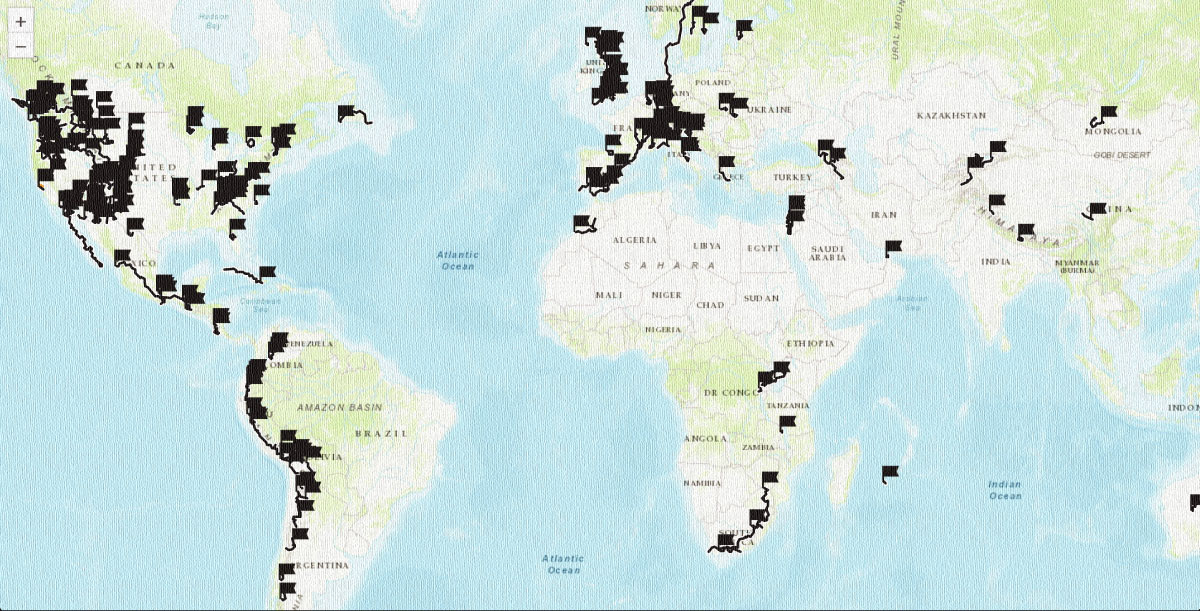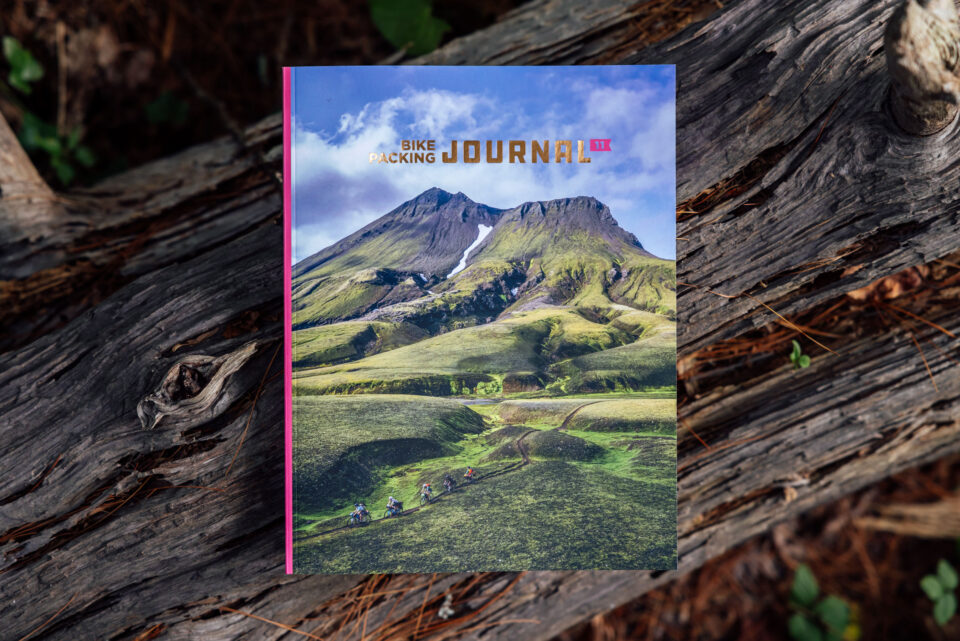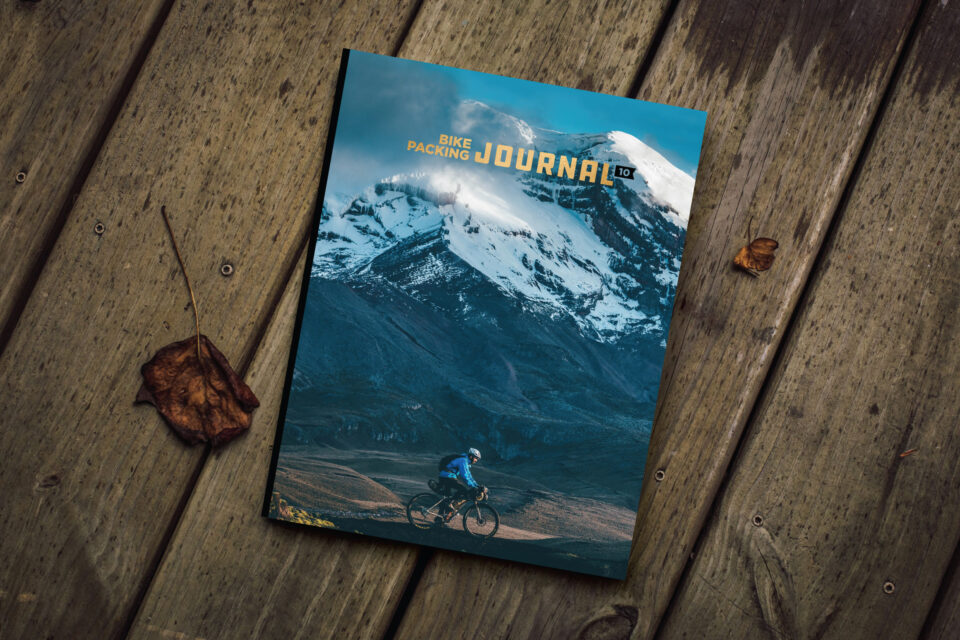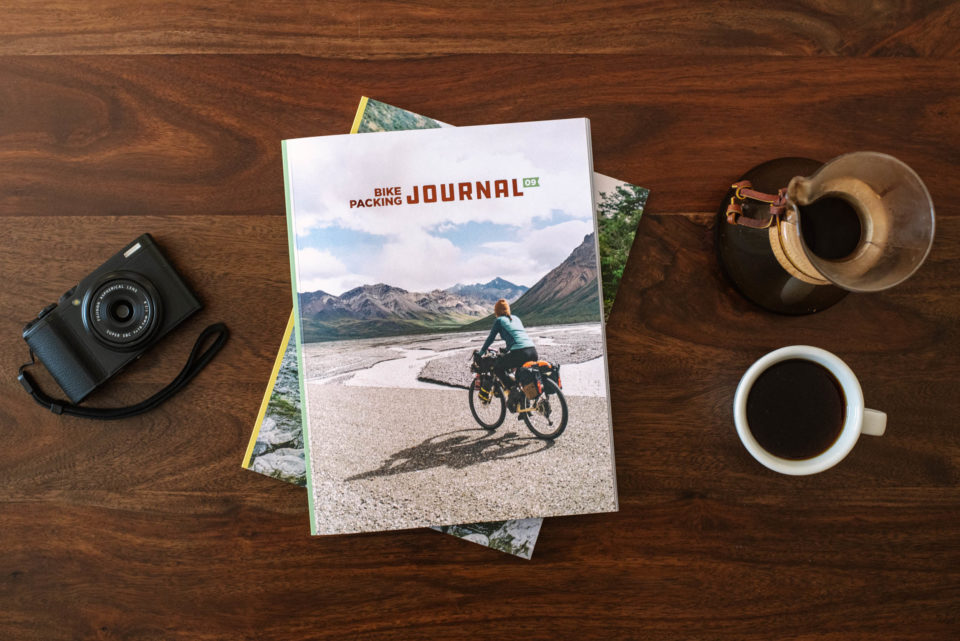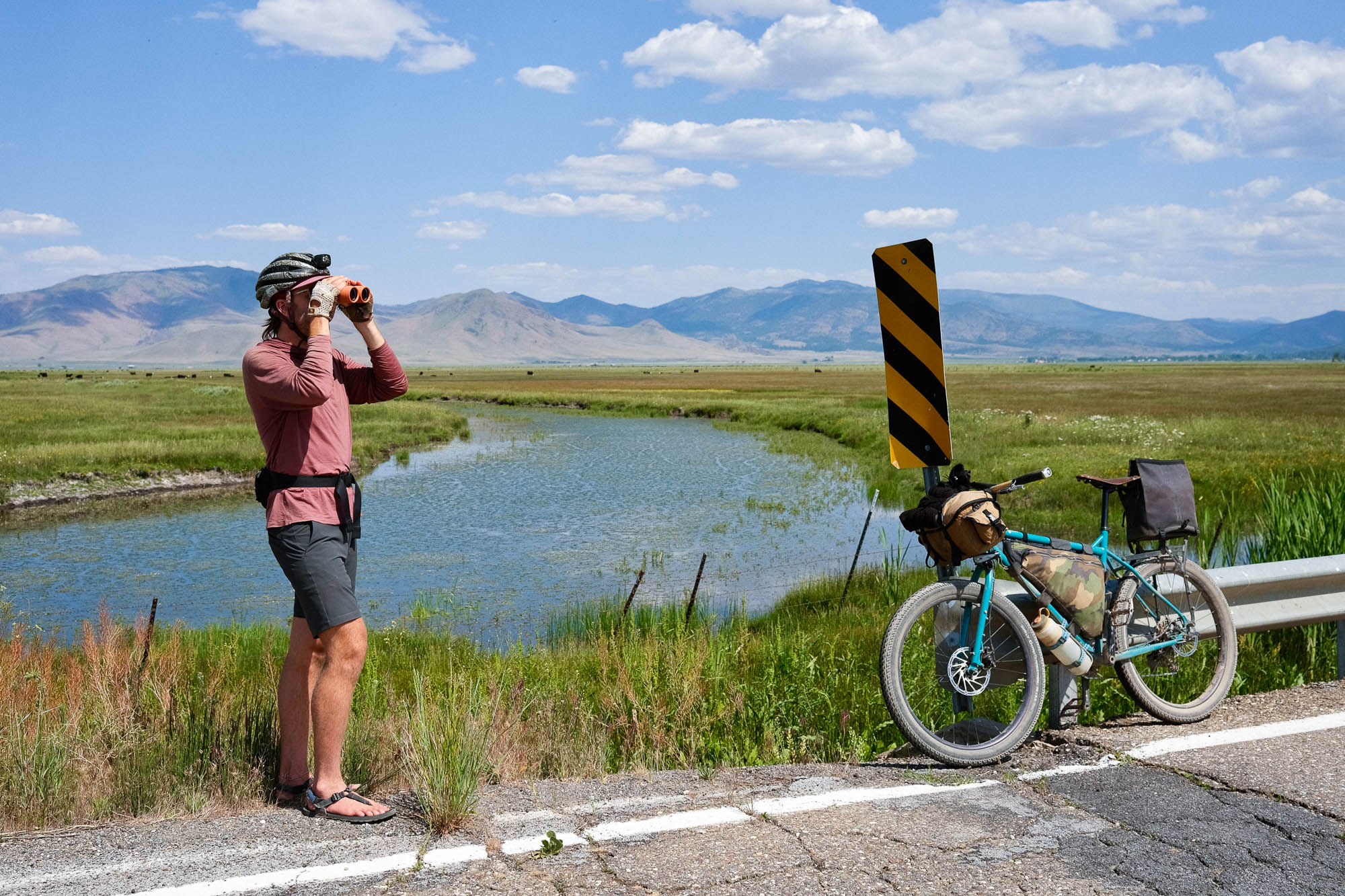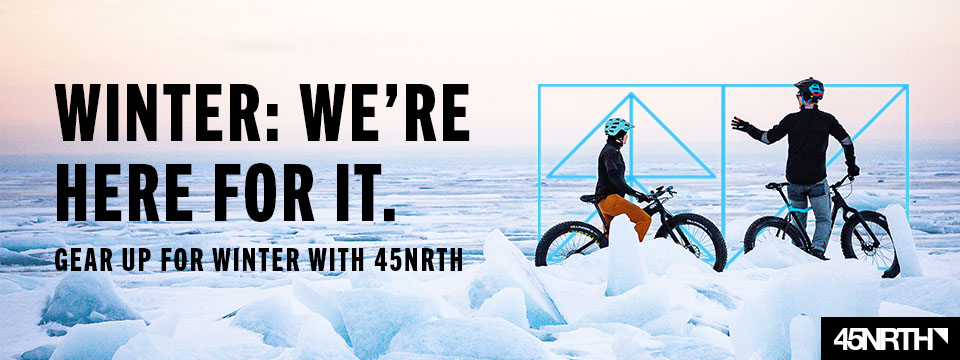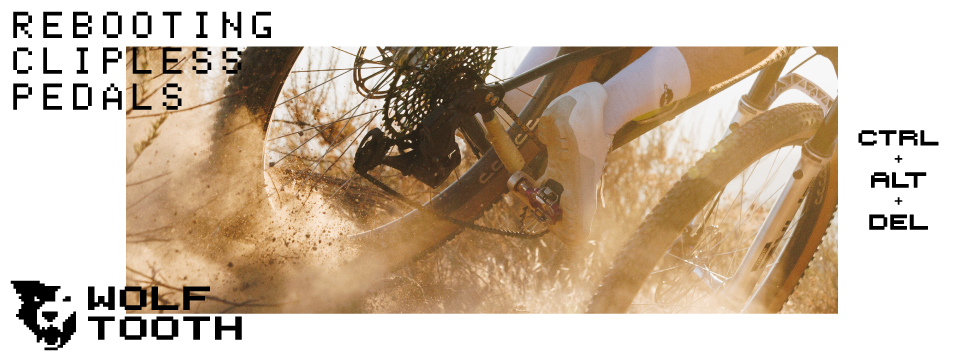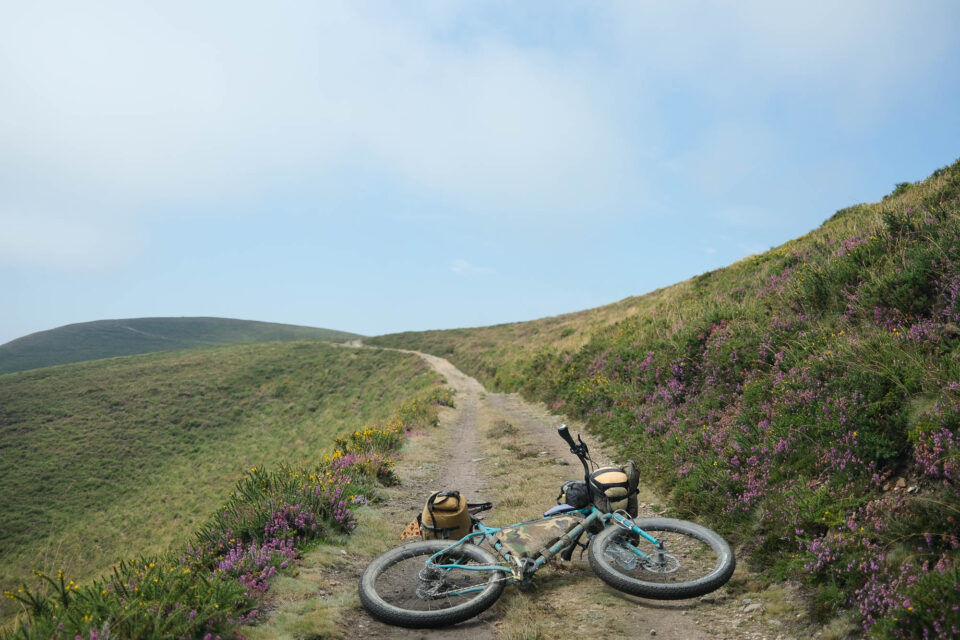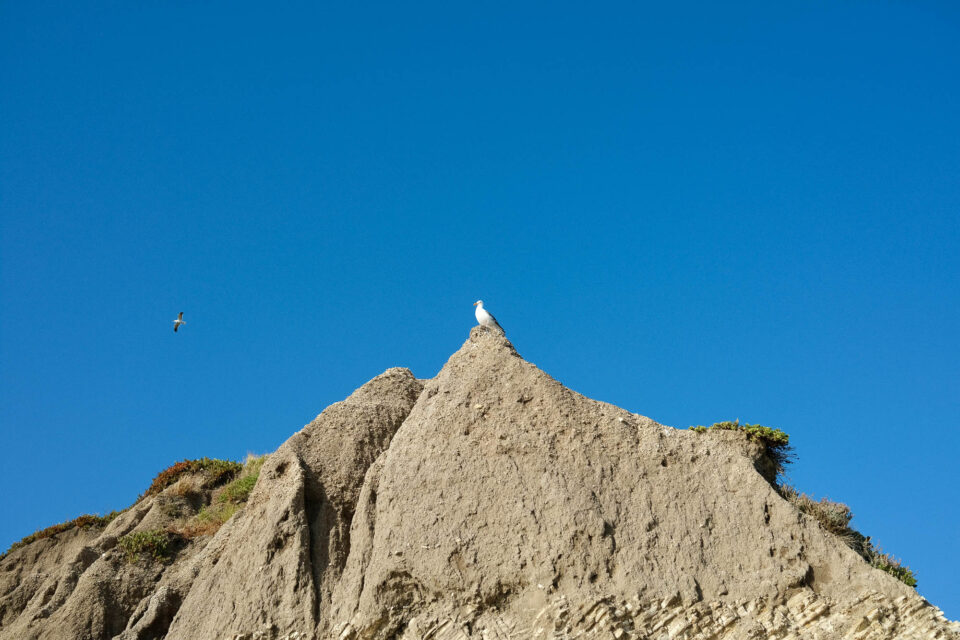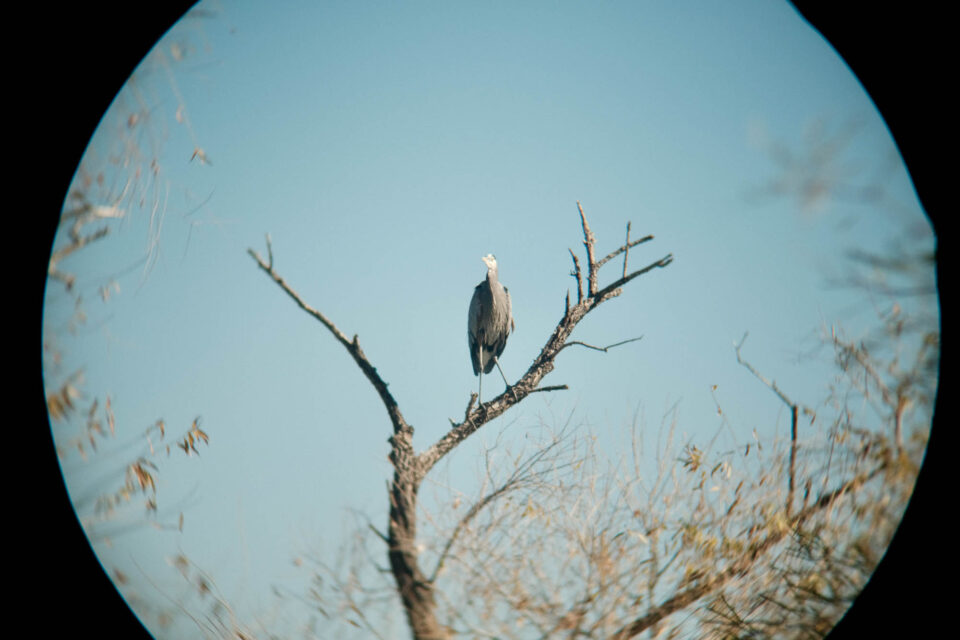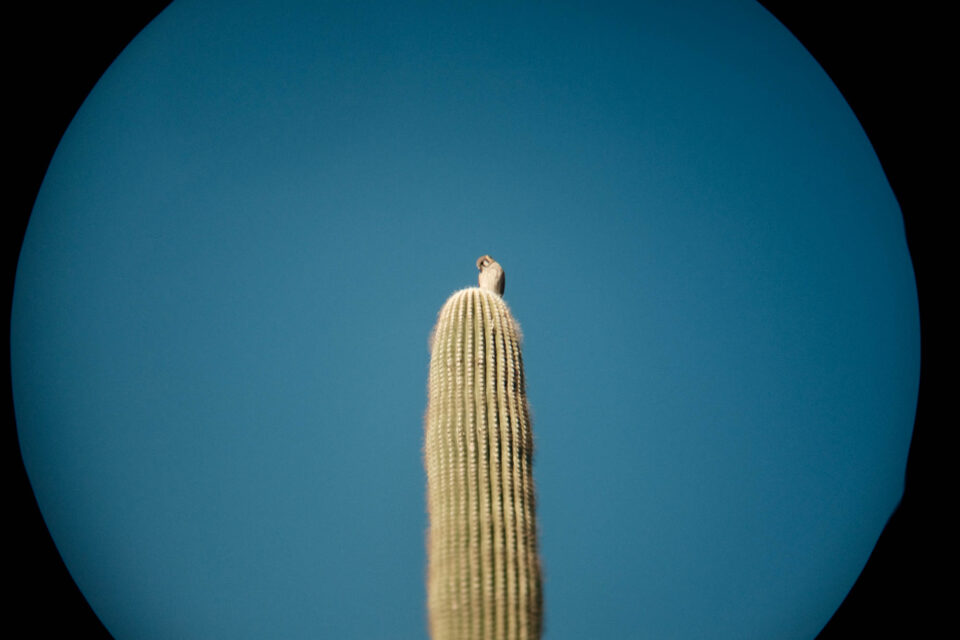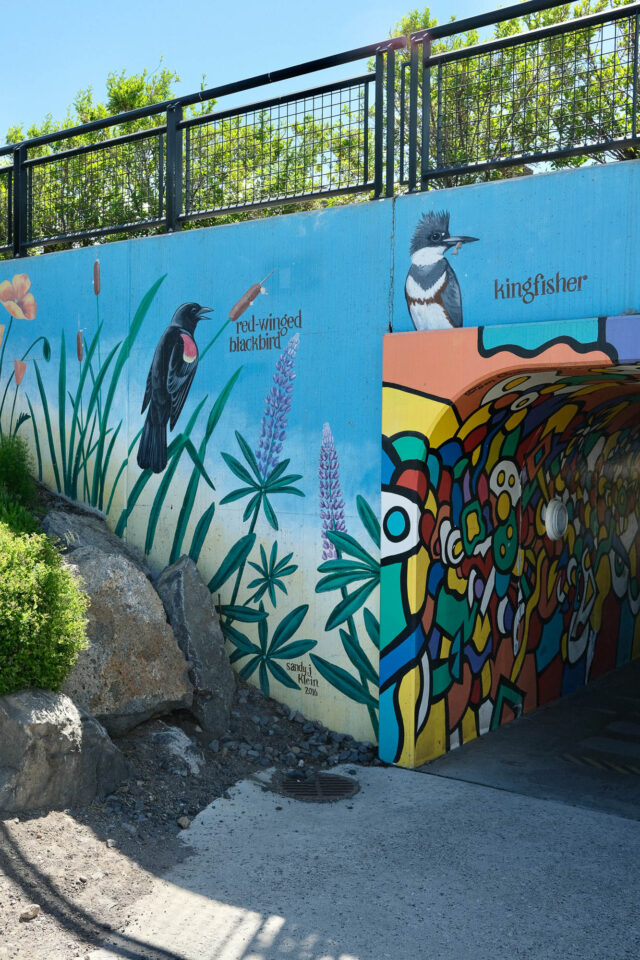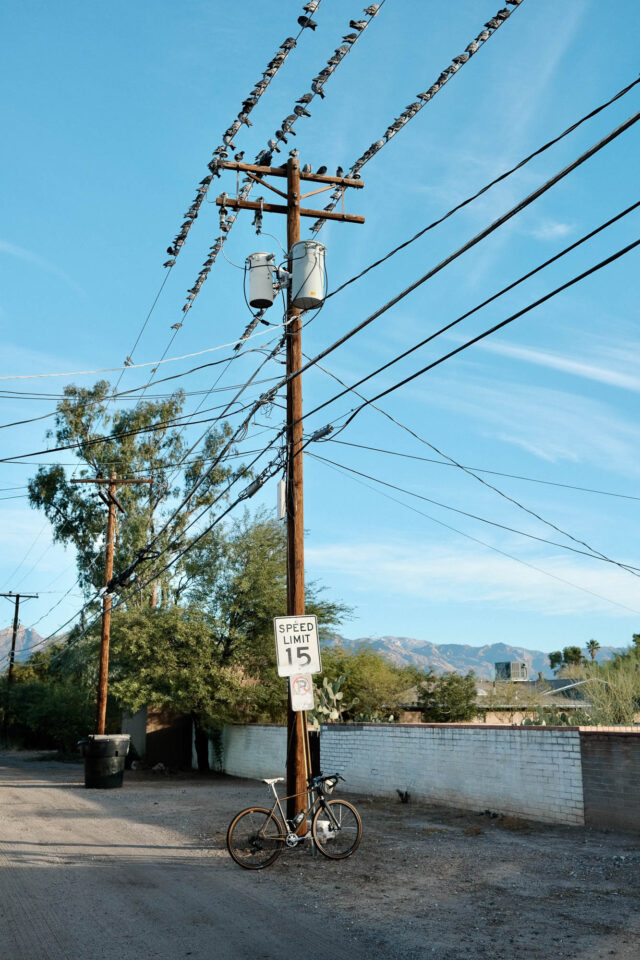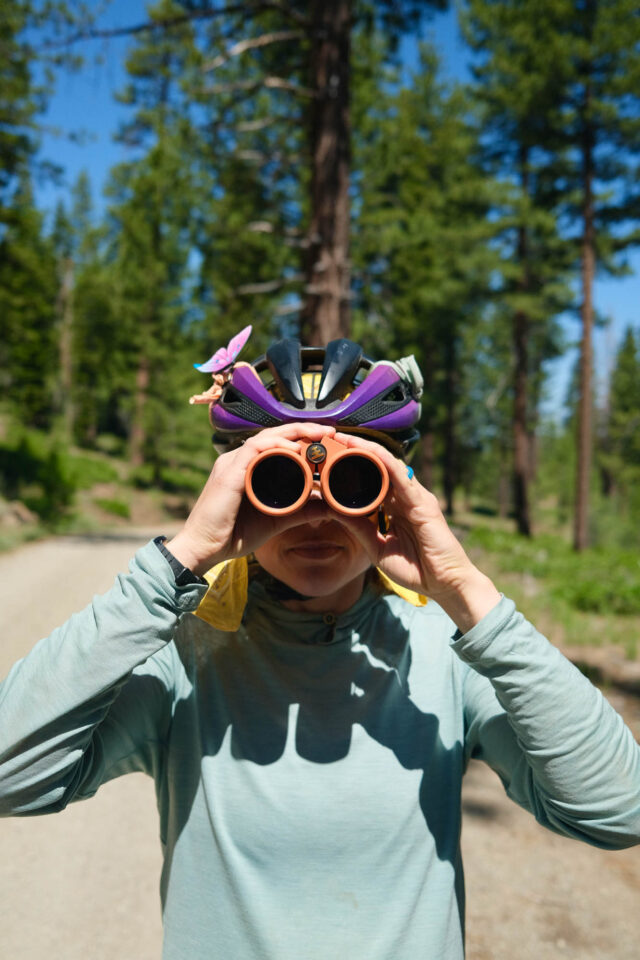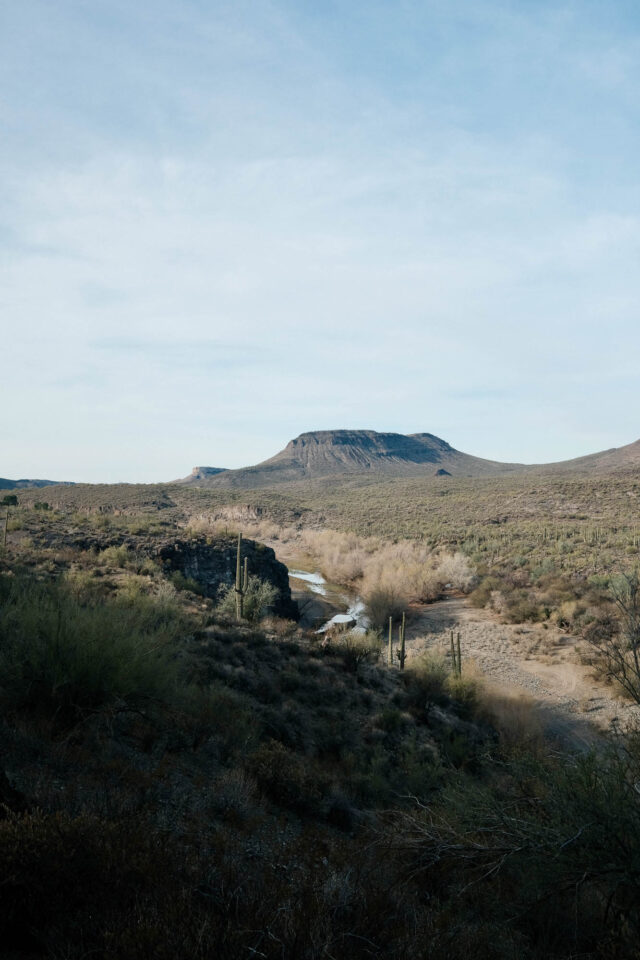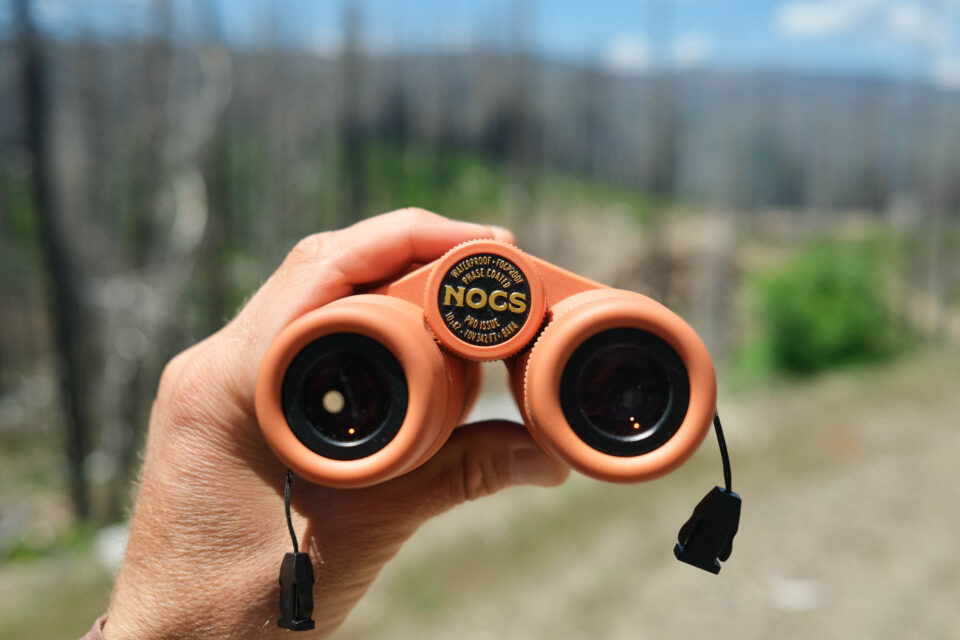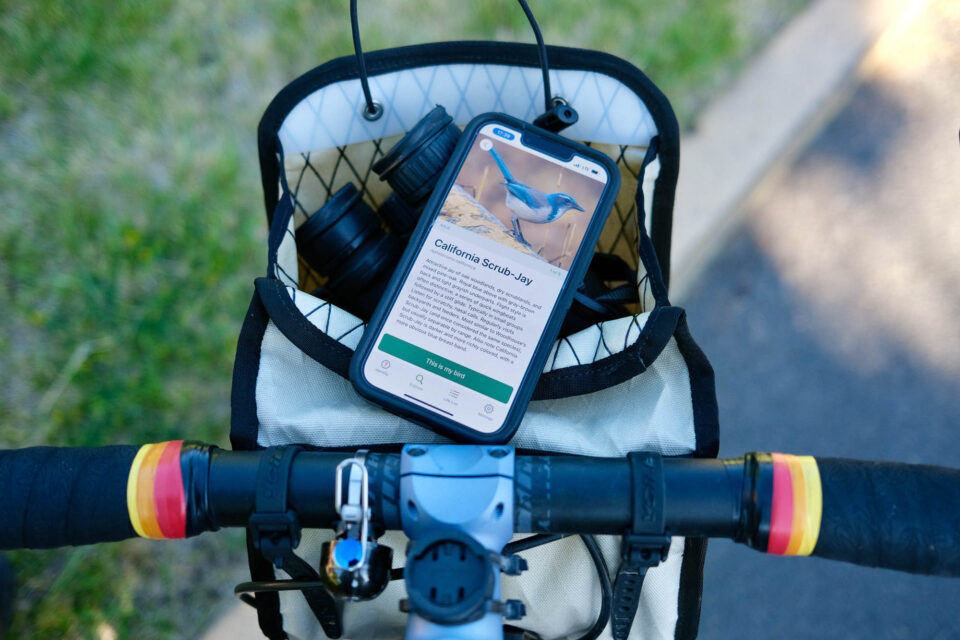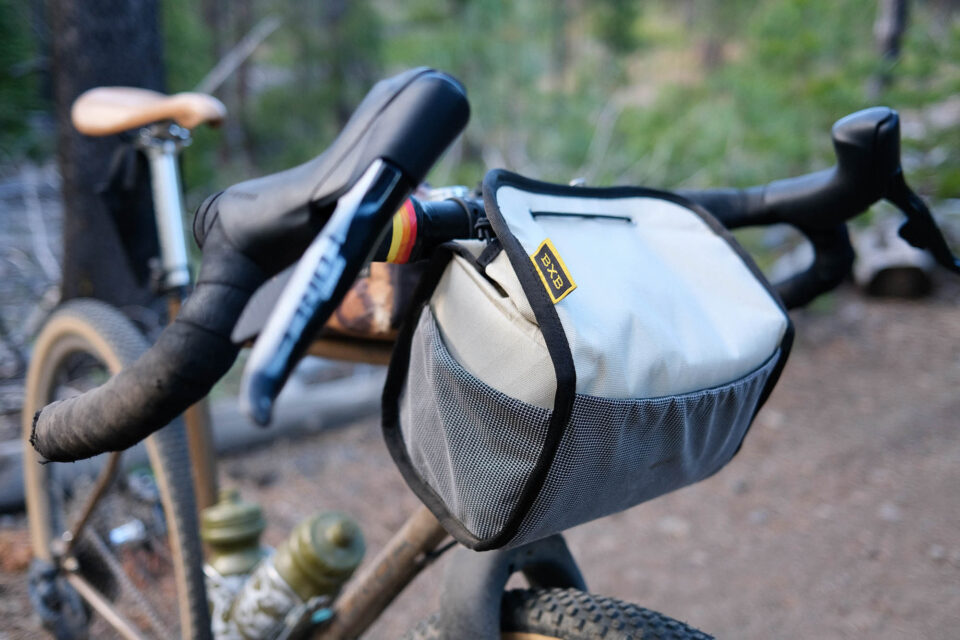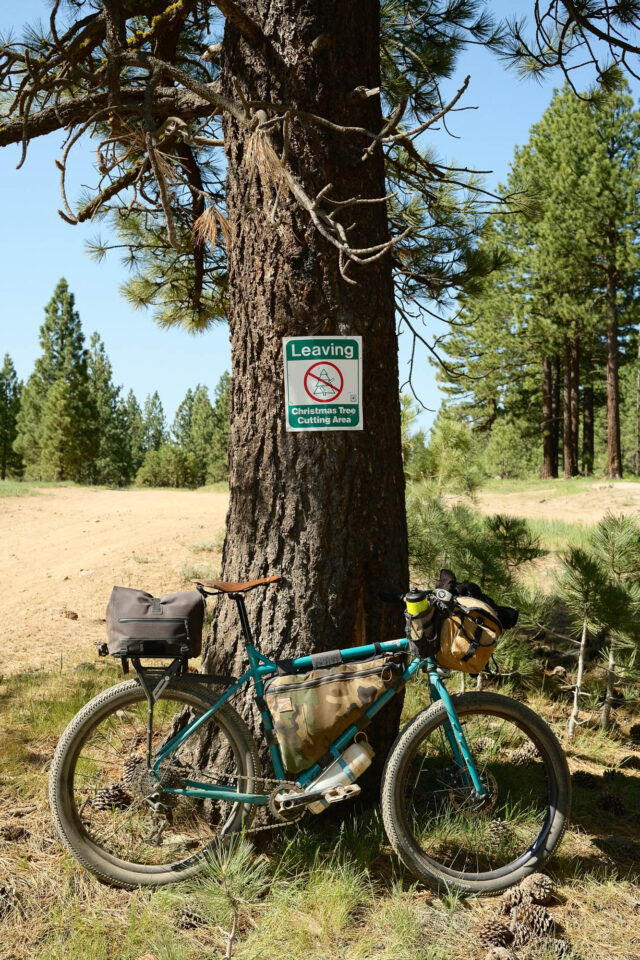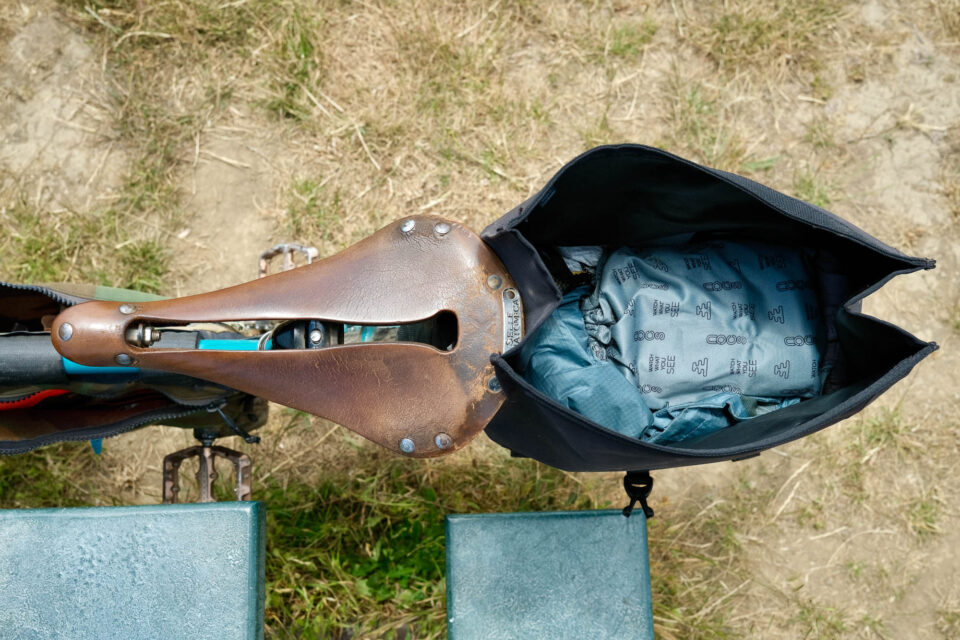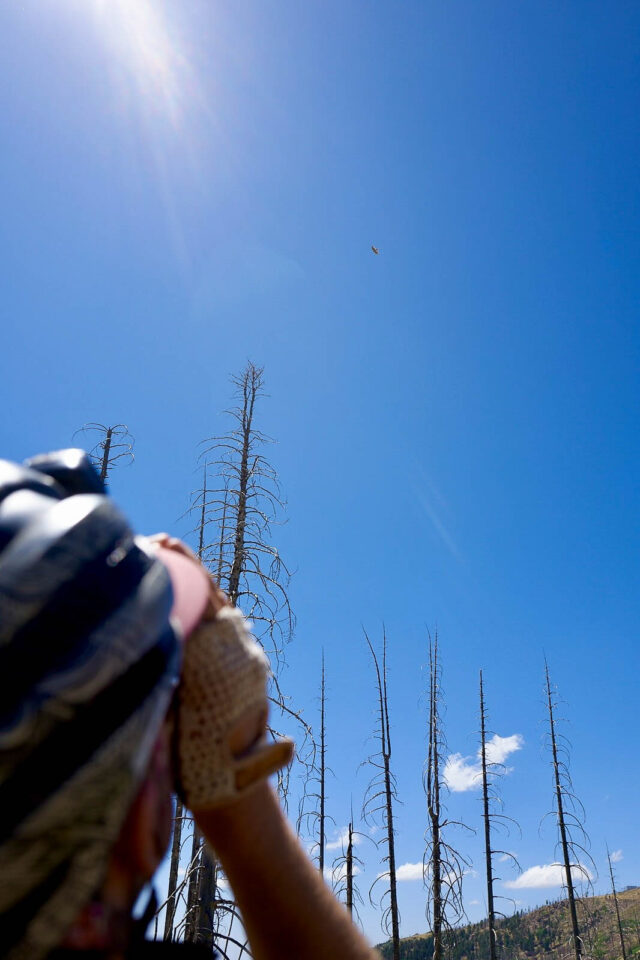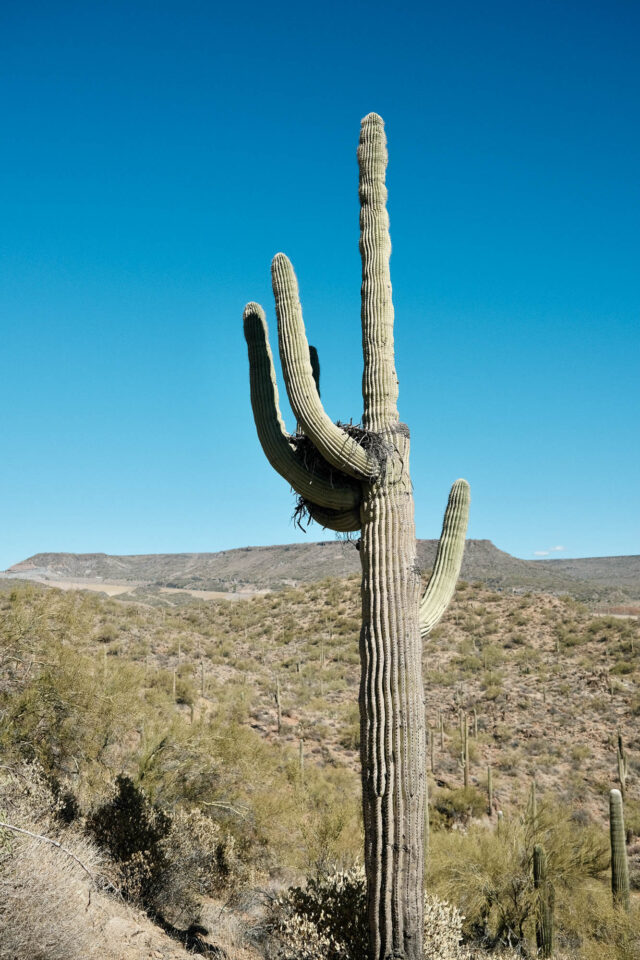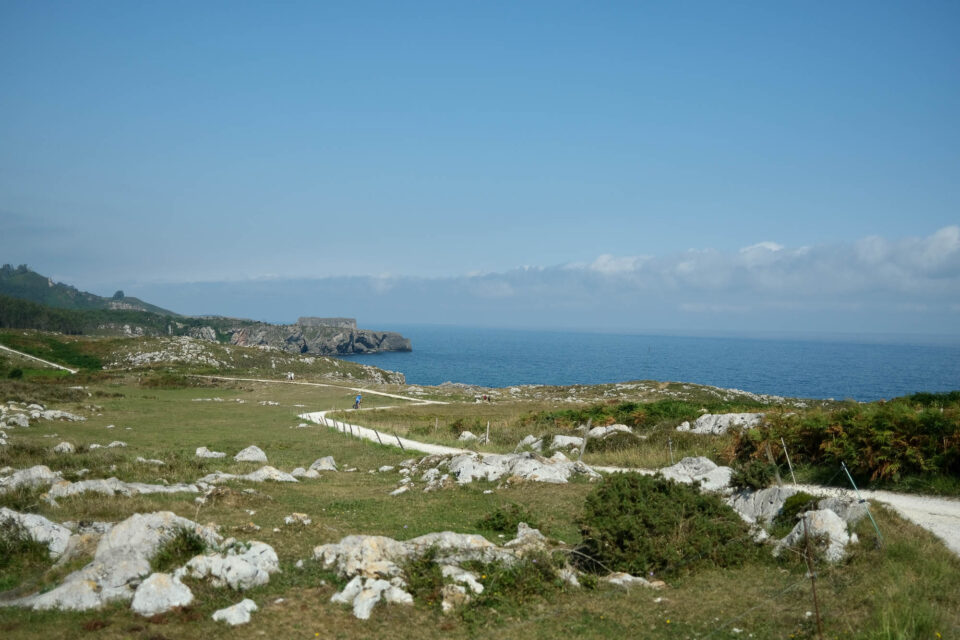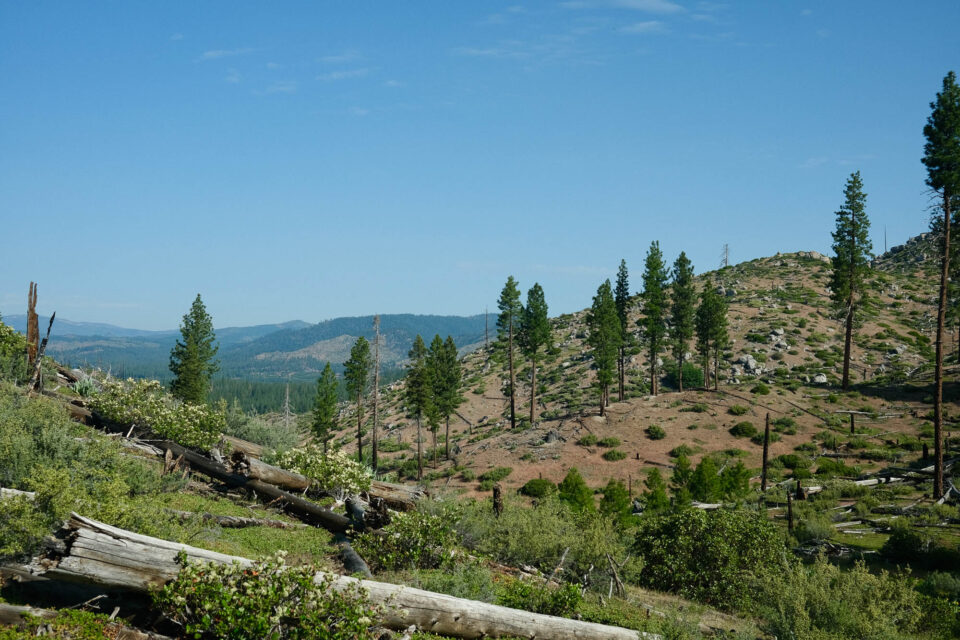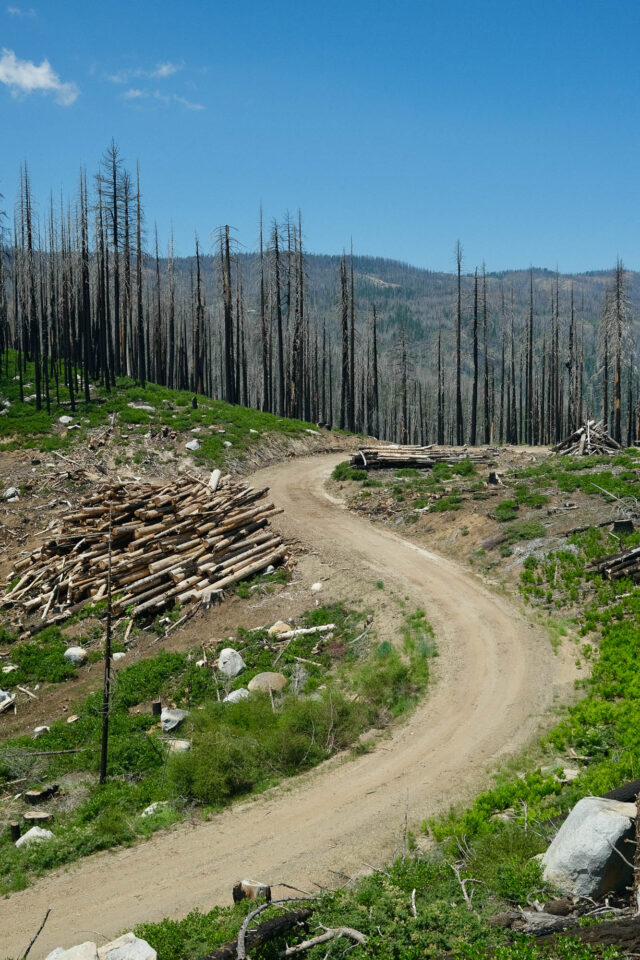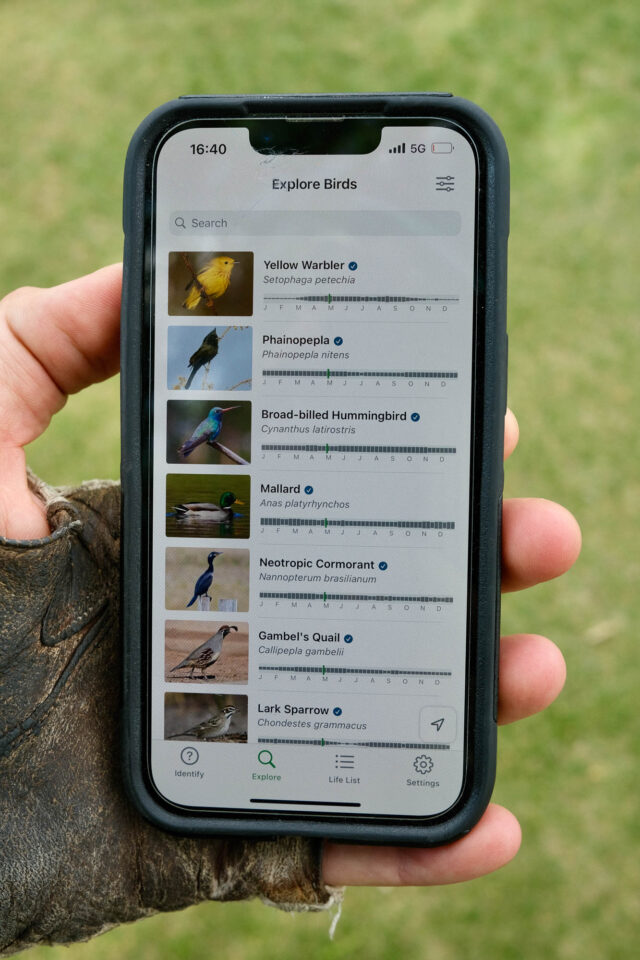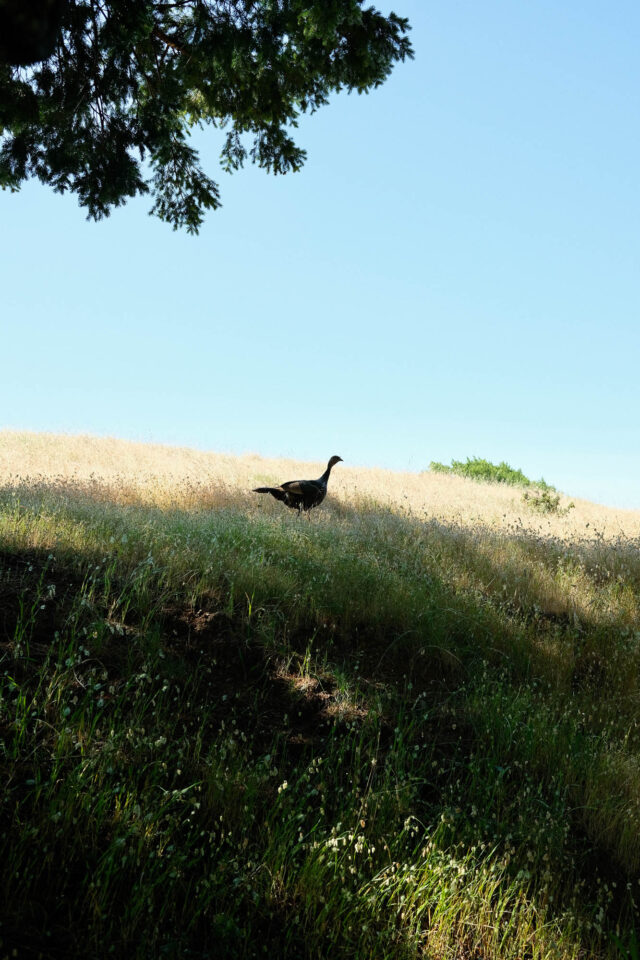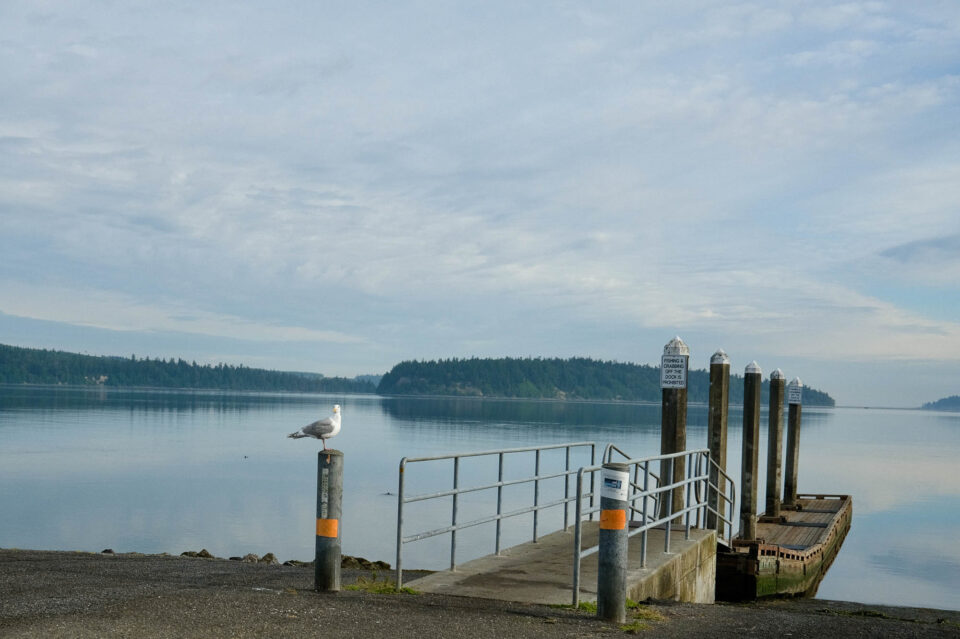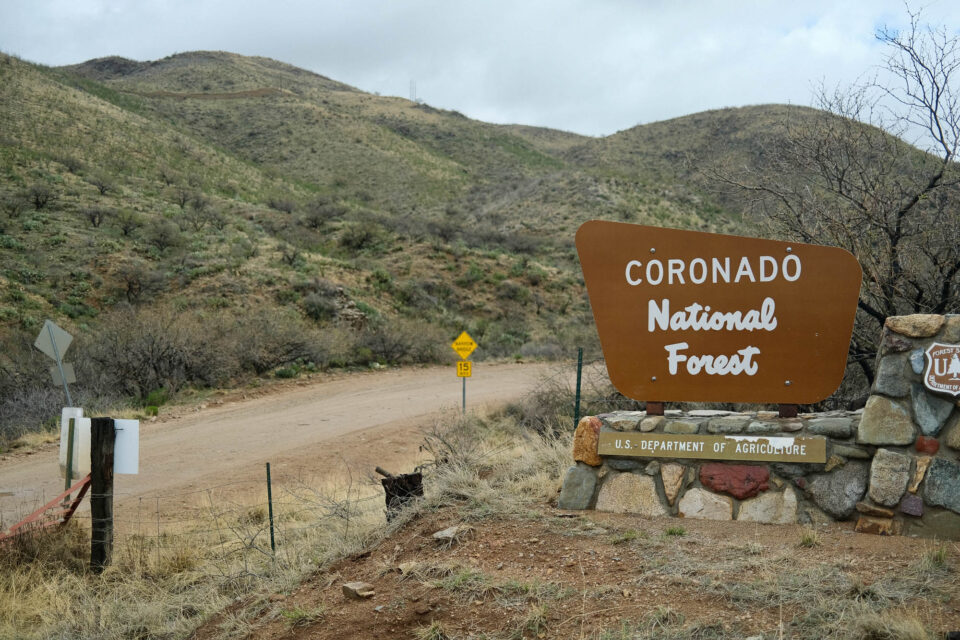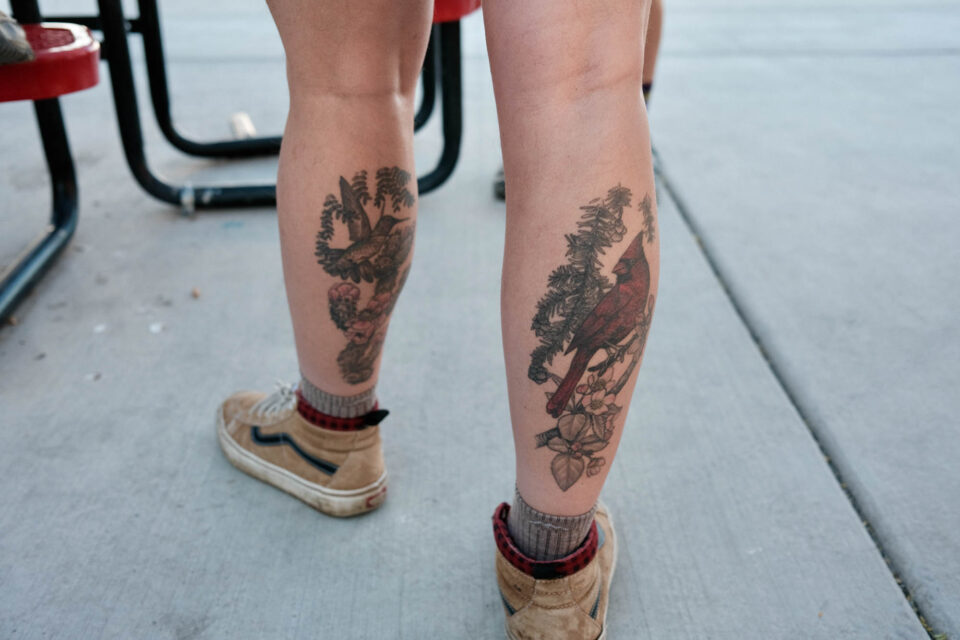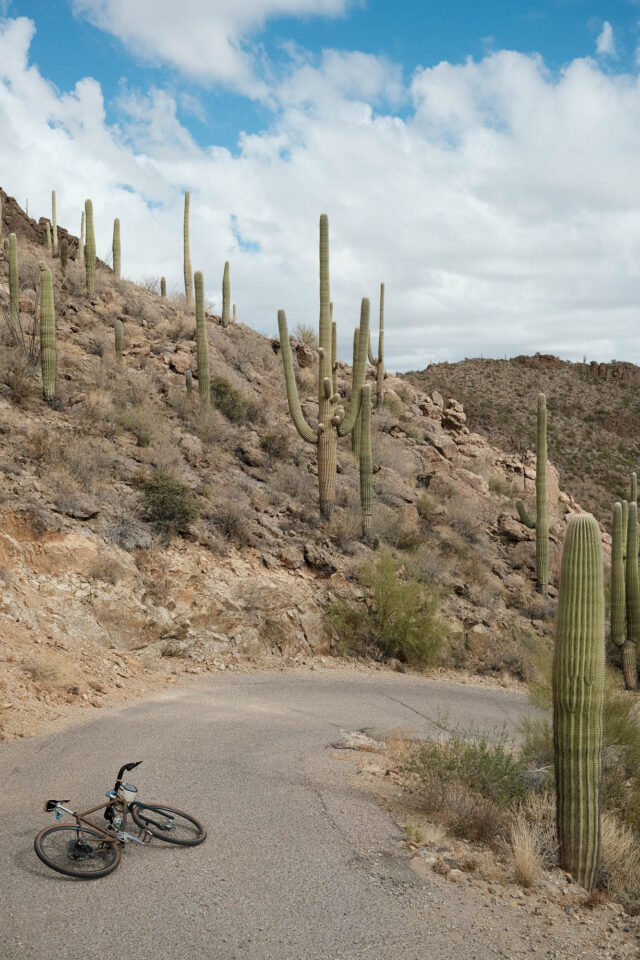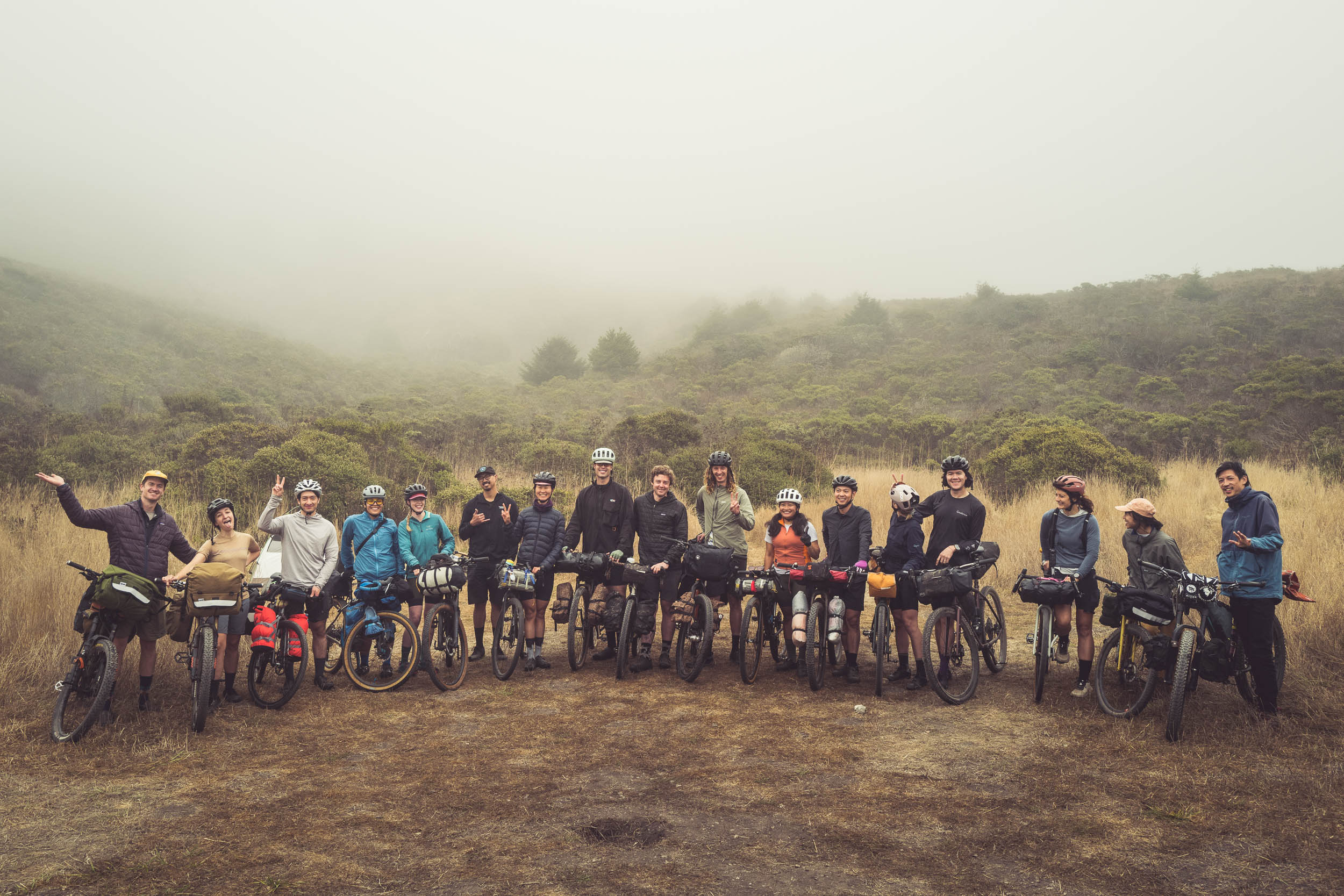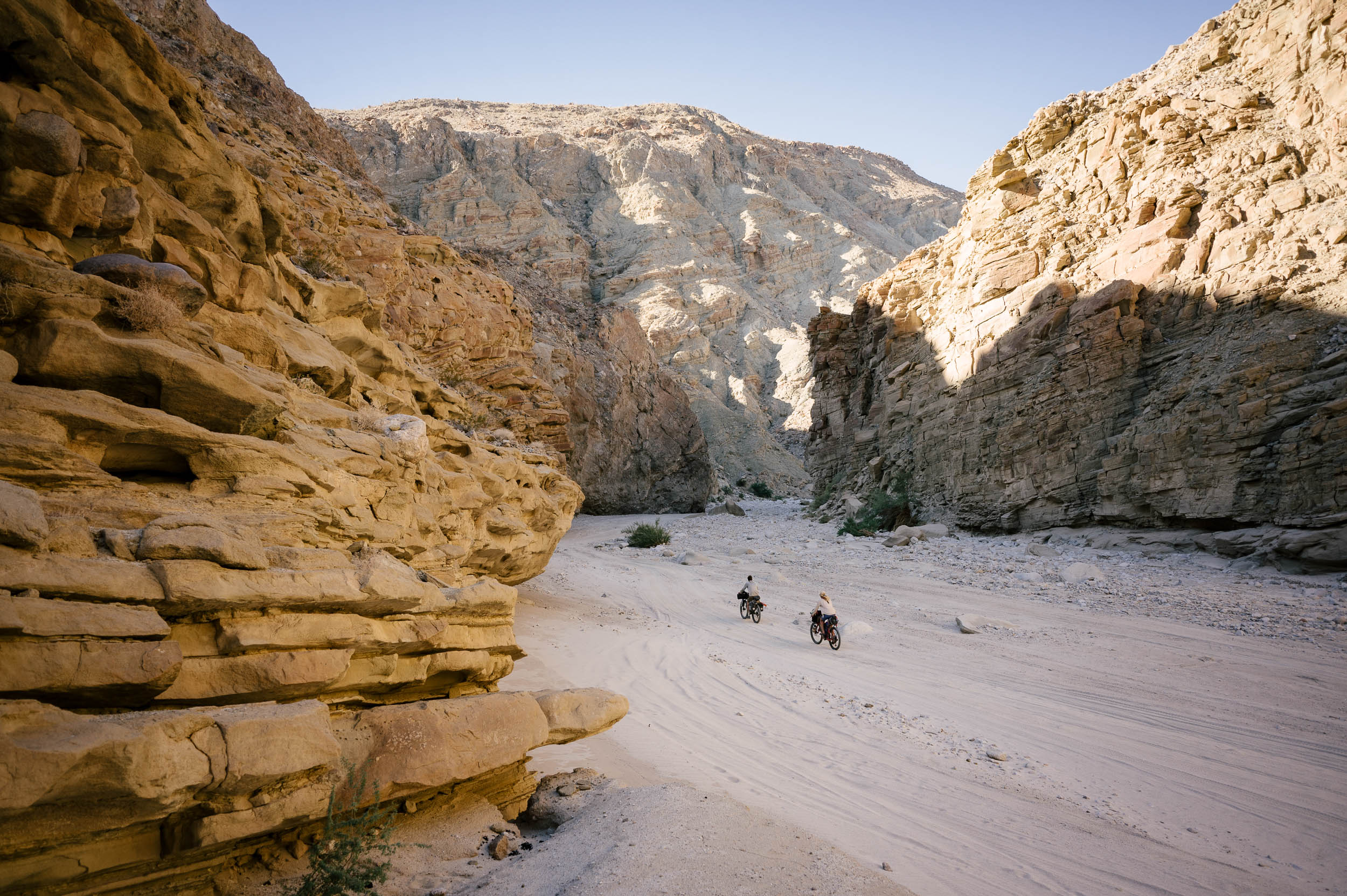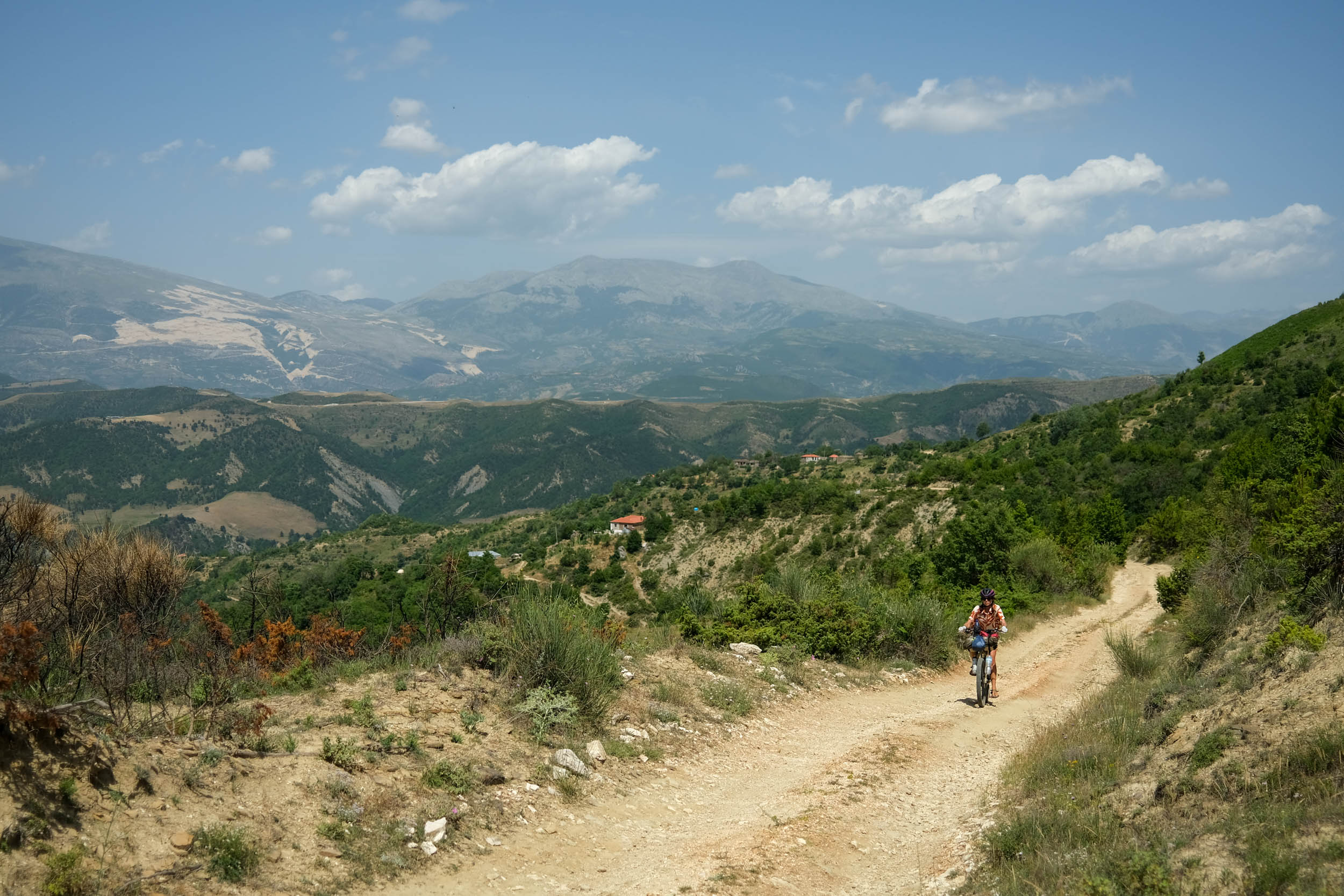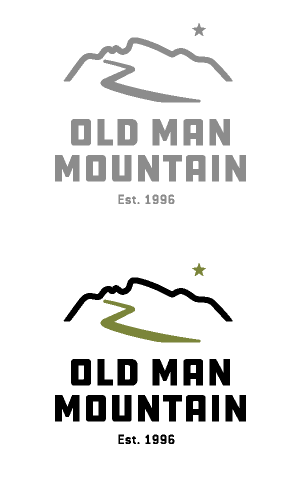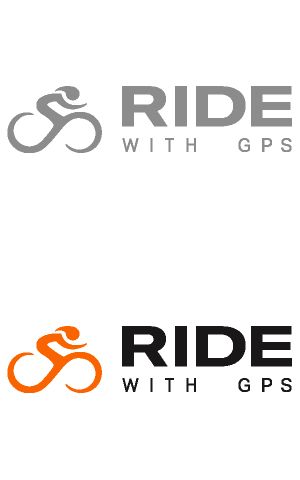A Beginner’s Guide to Bike Birding
Combining birdwatching with bikepacking is an easy way to connect with the natural world and add another layer to your rides. In this Beginner’s Guide to Bike Birding, Henley Phillips outlines the basics of birding, the essential gear you need to begin, and how to make the most out of any outing. Explore it here…
PUBLISHED Jul 11, 2025
My introduction to bike birding came from an unexpected source: a car salesman at a Subaru dealership a few years ago. My beloved Astro van had finally bit the dust on a trip home from the Arizona Trail, so in those intervening minutes-turned-hours you experience when buying a car, I got to know our guy Mike pretty well.
Mainly, I was interested in the camera and the foot-long lens sitting on his desk. Turns out, he’s a bird photographer and often spends his lunches looking for hawks in the nearby wash. His desk was very tidy. Amid a few scattered papers was a framed watercolor painting of a bird with a giant letter “P” next to it. “Pyrrhuloxia,” he told me. “Desert cardinal.”
I told him about taking pictures on bike rides, which led to tales of bikepacking and the places my wife and I had ridden around the world. Interest was piqued on both sides, and by the end of the week, on Mike’s recommendation, I was reading Dorian Anderson’s Birding Under the Influence, a memoir recounting his year-long bike tour to identify as many birds as possible, known as a Big Year. Before reading Anderson’s book, I noticed birds around me in my day-to-day life, but I didn’t look for birds. They flew in and out of whatever else I was doing, but I paid them little attention.
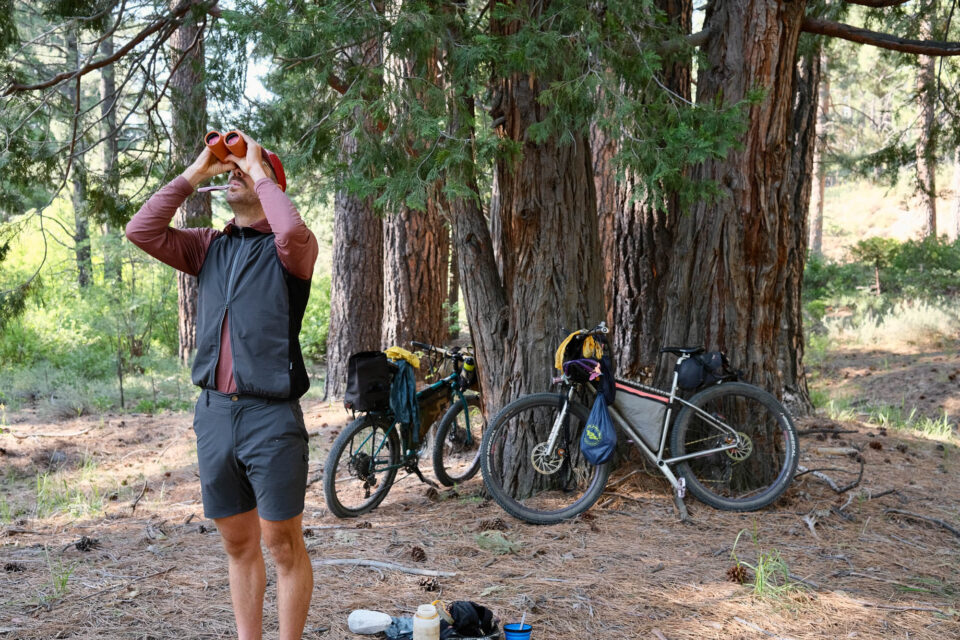
Now, I grew up on 10 acres in Central Texas in the top of the Hill Country, a place that’s actually pretty good for birds. My free time as a kid was spent playing outside and romping around the creek that bordered the property. I now know most of the birds that live in the pecan trees and juniper thickets along the creek, but for the first few decades of my life, birds—if I noticed them at all—were classified as follows:
Anything that soared was a buzzard. Any brown bird that skittered in leaf litter was a sparrow. Flashes of red were cardinals. I knew buzzards, sparrows, and cardinals. That’s it. After college, I lived in one of the most bird-diverse countries in the world for nearly three years, and I can confidently tell you I saw a toucan once. Serious birders visit the same country and come back with hundreds of species sightings.
For as much time as I’ve spent outside on a bike, on trails, or in city parks around the country, I had never thought to take a closer look at the birds around me. All that changed after reading Anderson’s book, and birding has now become a big part of how I spend my free time. Coupled with a bike ride or tour, bike birding has provided yet another way to enjoy being out on two wheels.
I’m very much an amateur at both riding bikes and birding, so take this guide as more of an appetizer to see if you like what could come next. What follows is neither definitive nor exhaustive, but it serves as a good starting point for anyone new to the concept.
WHY BIRDS?
Of all the secondary things to do or look at while on a bike ride, why birds? To start, birds inhabit every continent on Earth, so there’s a good chance you’ll see one while out riding. One of the clear joys of riding a bike is experiencing the natural world around us—high mountain passes, rivers and streams, a sunset on a summer evening. Birds are perhaps the most ubiquitous animal to inhabit all of these environments, and thus, provide a point of connection similar to meeting a local on tour. Once you start taking notice of birds, it’s impossible to unsee them.
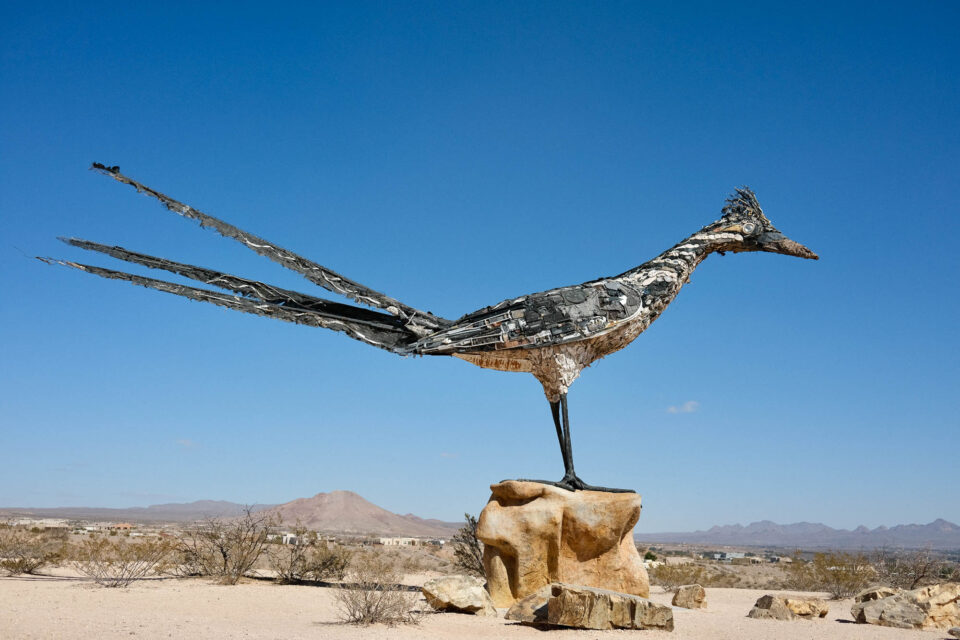
Birding is very much a global collective effort to keep tabs on the health of populations, providing insight into the changing climate. eBird, one of the resources listed later in this guide, is one of the largest citizen science efforts in the world. Identifying birds while out riding, then, contributes to something much larger and can add another layer of meaning to your rides.
Apart from just seeing them, understanding more about them is what really got me hooked. Take the bar-tailed godwit, for example. As many birds do in preparation for their migration, the godwit’s internal organs shrink to reduce body weight for the journey. Of that weight, over 50 percent is stored as fat reserves to cover the nearly 7,000-mile flight from Alaska to New Zealand. Non. Stop.
Or, consider the yellow warbler. Held in your hand, you would barely notice the weight of this songbird, coming in at a mere 0.35 ounces. I use double the weight in coffee beans each morning to make a single cup of coffee, and yet, these birds migrate across the Gulf of Mexico in a single push, a distance of nearly 500 miles.
Covering massive distances under your own power. Feeling your body morph to meet the challenge. Sometimes surviving on little sleep. Dealing with all types of weather conditions. Sound familiar? Birds and the folks who watch them aren’t too different from bikes and the people who ride them. Apps like eBird and Merlin are the Strava of the bird world, where you can track the number of birds seen and the distance covered on a given outing. There are events like the Christmas Bird Count, local birding festivals, and the North American Big Year to counter the Tour Divide and your local gravel event. For some, hopping on a plane to glimpse a rare bird in Morocco is analogous to taking on that far-flung bike tour to Mongolia. In short, if you’ve found a place in the bike world, then bike birding could be in your future.

ESSENTIAL GEAR
An introductory bike birding setup is really a very simple thing. A bicycle, a pair of binoculars, and a way to carry them will get you going. Sometimes, it’s fun to simply see what you can see without identifying species to start. Give it a try, see if your interest is piqued, and then you can get into the nitty-gritty of identification. Below are my personal choices for binoculars, how to carry them, and, when ready, resources for identifying.
Binocular Basics
When choosing a set of binoculars for bike birding, there are a few numbers to pay attention to. Mainly, magnification and the objective lens size. These will be clearly marked on the outside of any pair of binoculars. A measurement of 8x32mm indicates a magnification of 8x and an outer lens diameter of 32mm. The larger the numbers, the bigger and heavier the binoculars.
It turns out that some of the big names in cameras have been making binoculars for a while now, and you can often find a good pair of secondhand optics for cheap. There’s also a chance that someone you know might have a pair lying around unused. I inherited my late grandfather’s Pentax 8x42mm and happily began my birding for a sum total of $0. My brother also gifted me a secondhand pair of Nikon 9x25mm, and these easily slip into a top tube bag or hip bag.
I currently use a set of 10x42mm from Nocs Provisions, which are definitely on the larger size for bike birding. These have worked great for me around town and on tour, but for the space-conscious or those new to binoculars, I’d suggest their Field Issue in either an 8x32mm or 10x32mm. Nocs has also recently released a lightweight monocular called the Zero Tube for even more packability and a lower price point. This is a great option for casual birding, but as you become more interested, you’ll appreciate a full set of binoculars. Lastly, gone are the days of black and forest green being the only color options, as Nocs offers exuberantly fun colors.
Bags for Day Rides
Riding with binoculars dangling around your body can be a bit awkward, especially on the rough stuff, so I prefer to store them in a bag instead. Again, these can be secondhand. If you already have bags for your bikes, then you’re likely good to go. Quick access is the name of the game, and these options have worked well for me.
For birding around town or long day rides where I definitely want a full set of binoculars, the Tail Grab from Jay at Bags by Bird has been my go-to. Even with the larger set of 10x42s, it offers plenty of space for an additional bird identification book, a few tools, some snacks, and spare layers when needed. The elastic cord secures everything without issue, and it’s the easiest and quickest-opening bag I’ve used.
Depending on the size of your binoculars, a top tube bag or feedbag is an obvious choice for smaller items that you want to keep close at hand. A constant companion on nearly every bike ride over the past 10 years, my Revelate Designs Feedbag is a little worse for wear but still going strong. My beloved Dispersed Top Tube Bag is plenty large for a small set of binoculars, snacks, and a phone—all the essentials in one spot.
Bags for Multi-Day Rides
I recently toured Northern California for a couple of weeks, binoculars in tow, and I really enjoyed using the Juniper Trunk Bag from Old Man Mountain. I stuffed it with electronics, toiletries, snacks, and clothes, the latter serving as a nice cushion for my binoculars, which were sitting right on top. Accessing the binoculars was super easy both on and off the bike, and the side pocket is great for a phone or booklet for quick identification. I rode a similar setup on the Black Canyon Trail back in February, and given how rough the trail can be, I was pleasantly surprised that my binoculars came through without issue.
A classic option for longer rides could be something like the Swift Zeitgeist, Fab’s Chest, or similarly styled bag. With the large compartment an obvious choice for your optics, the side pouches offer quicker access and safe storage for smaller binoculars. This style of bag is so ubiquitous these days that you’re sure to find a maker who can accommodate your color choices, capacity, and budget.
Two additional options I haven’t tried but are worth considering would be a monocular in a feedbag or hip pouch, or perhaps securing a larger set of binoculars using something like the Outer Shell Camera Strap.
Bird Identification Resources
It hasn’t been so long since the days when you wouldn’t leave the house without your bird identification book. A Sibley Guide or one of Ken Kaufman’s Field Guides would have been standard issue even just a few years ago, but apps like Merlin and eBird have made it increasingly easy to access an extraordinary amount of info in your pocket. It’s also helped contribute to the growing interest in birding, where in the United States alone, one in three adults enjoy birding in some capacity. Collectively, we spent over $100 billion in 2022 on gear, travel, subscriptions, and the like.
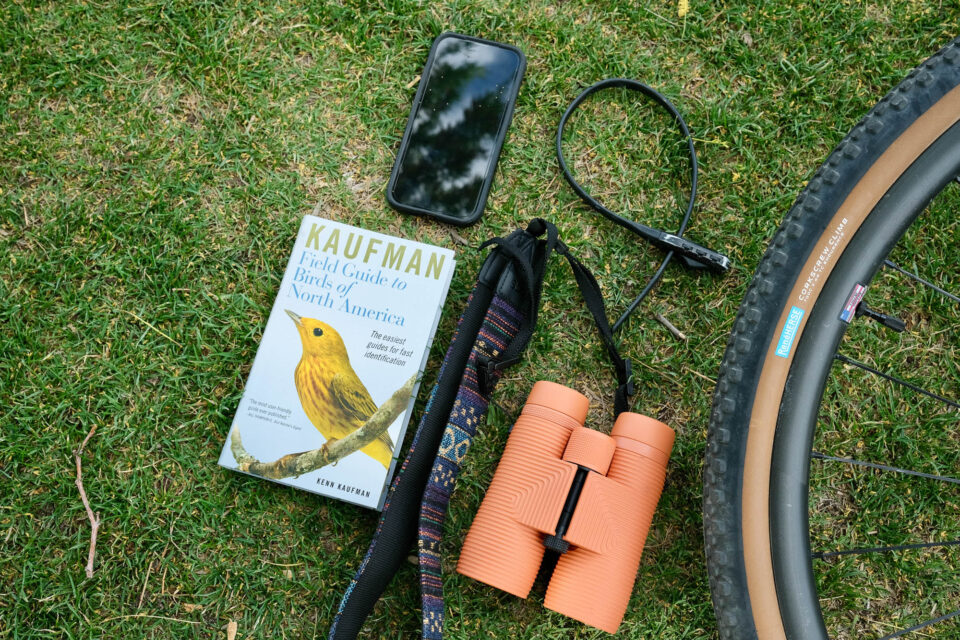
Both eBird and Merlin are free resources provided by the Cornell Lab of Ornithology and allow you to catalogue and ID your sightings, respectively. The apps use your location to suggest likely birds in the area, provide identification via sound recordings (eBird), and offer insight into what other birders have been seeing in the area in recent days (Merlin). In this way, there’s a small social component to eBird in particular, which ultimately syncs with Merlin to keep track of your Life List. It will also track your distance and time spent birding, similar to Strava or your bike computer. Keep in mind that the tracking function can deplete your battery quickly, so an external battery is a must-have for all-day birding outings.
Though I don’t use it in the field much and most likely wouldn’t tow it on tour, a copy of any bird book local to your area is a fun resource to have on hand. Comparing notes from both a printed and an online resource gives a fuller picture of what you’re seeing. For North America, anything by Sibley or Kaufman would be a great starting point and can often be found secondhand at a local bookstore.
Lastly, as with any bike ride, a repair kit, lock, and a few bucks to grab a coffee before or after won’t go unused.
TIPS ON WHERE AND HOW TO BIKE BIRD
Birds are everywhere, but you’ll have better luck and see a larger variety if you know where and how to look. Again, I’m still figuring this out myself, but here are a few thoughts and tips to help you get the most from your outings.

Birding is best in the early morning and again in the evening before sunset. This often nicely coincides with the rhythm of a bike tour—waking early and finding camp before it gets dark—so breaking out the binoculars and looking around for a bit is a nice addition. Areas with water, natural cover in the form of brush and tree canopy, or perches for large birds of prey are a great start. Consider your local national forests, BLM land, and wildlife refuges. Any bikepacking trip will likely take you to these areas, so binoculars are a worthwhile addition to your packing list.
Make sure to correctly adjust your binoculars before heading out. There’s a bit more to it than the big dial at the top. If you wear glasses or have vision differences to account for, a quick adjustment or two will help. Here’s a quick video resource to help you get everything dialed.
When you see a new bird, take a moment to absorb as many details as possible, including the shape of the beak, color patterns, behavior, and position. Patience is key. Don’t immediately go to your phone or book, as the bird may fly away before you’ve had a good enough look. There are often subtle differences that distinguish one species from another, so don’t miss these. This can be especially hard when it’s a new bird that you want to quickly identify. Try to avoid what Amy Tan calls “new bird tachycardia.” Before long, you’ll know enough to get the GISS (General Impression, Size, and Shape) and will be able to identify them more quickly.
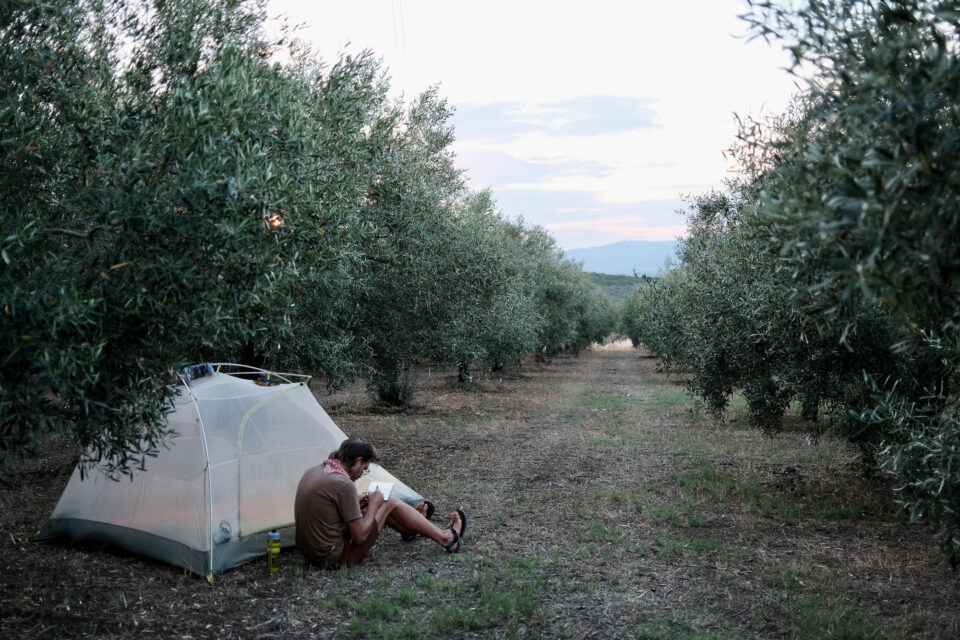
Spring and fall migrations are wonderful, exciting times to be out birding. In the Northern Hemisphere, the weather is generally agreeable, and the chance to see new birds skyrockets. If you’re not ready to bike bird but are bird-curious, your backyard or a city park is an excellent place to start. Set out some water dishes and a little seed, and you’ll be drawing birds in no time.
ADDITIONAL RESOURCES
Once you’re sorted with the basics listed above, there are countless resources in the form of literature, conservation groups, social meetups, and initiative-driven companies to support your burgeoning interest in all things avian. I’ve listed a few of my favorites below as a starting point.
- Birding under the Influence: The previously mentioned memoir by Dorian Anderson. More of a personal account about the profound role his bike birding tour played in his addiction recovery.
- Kingbird Highway: Ken Kaufman’s recounting of his early years spent hitchhiking and birding around North America. One of the classic birding memoirs and a personal favorite.
- Those little tri-fold pamphlets at visitor centers are fun to use as a tracker, though usually void of photos.
- Conservation and education groups such as the National Audubon Society and American Bird Conservancy often host local chapters and events.
- The Christmas Bird Count is a casual, annual birding event with chapters worldwide. This was my first group birding event and a really fun way to meet other birders and learn a lot from those with more experience.
- There are several Feminist Bird Club Chapters around the country focused on increasing inclusivity in the birding community through meetups and birding outings.
- The Special Bird Service also hosts meetups and events to promote access to nature through birding.
- Nocs Provisions sometimes partners with local birders in cities around the country. They’ve even co-hosted a bike birding event with Slug Cycles!
- Rex Brasher was an incredibly talented artist and naturalist who produced beautiful bird drawings in a time when widespread access to bird identification was very limited. This short documentary from Field Notes revisits his life and work.
- The Bird Collective is a great corner of the internet for bird swag. Through online sales, they’ve contributed nearly $200,000 to bird conservation efforts since 2019 and are another source for birding meetups.
In the same way that an old mountain bike from the ‘90s can easily get you started down the path of bikepacking, a set of secondhand binoculars and time spent in your backyard can open up the exciting world of birding. It can be as low-key or as ambitious as you like. Bird photography is an entire field of its own, and some may enjoy learning the nuances of bird song and migration. Bike birding seems to be taking flight more over the past year, so if you’ve got tips or recommendations to share, please drop them below for the benefit of all!
Note: Writing this in June 2025, it’s essential to note that some of the best birding areas around the country are on public lands currently under threat of being sold off. Whether it’s bike birding, bike fishing, bike drawing, or just plain ‘ol biking, we need public lands as a backdrop for these and so many more activities. If you haven’t already, please read up and take action here.
Further Reading
Make sure to dig into these related articles for more info...
Please keep the conversation civil, constructive, and inclusive, or your comment will be removed.


